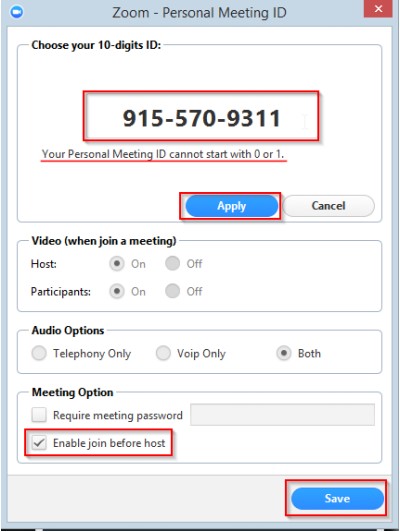

The meeting password will be embedded in the link so there’s no need for you to enter it manually. Joining meetings: What you need to knowĪfter June 23, if you join a scheduled Zoom meeting by clicking a link in an email invitation or through a desktop calendar invitation, nothing will change. To enable others to join an instant meeting using your PMI, you’ll need to share the password with them.īe sure to update any PMI meetings you’ve previously scheduled that take place after June 23, if they don't have a password. Zoom will auto-generate the first password for your PMI but you can customize it via your Zoom profile page on the Zoom web portal. Your PMI will use a unique password that stays the same for every meeting. With this change, meetings that use your Personal Meeting IDs (PMI) will also be password protected. Meetings using a Personal Meeting ID (PMI)

Remember, if you don’t add a password to meetings scheduled to take place after June 23, participants will not be able to join the meeting. You can also edit your existing meeting to add a Zoom password. Create a new meeting with a password and send an updated meeting invite to participants with the new link.Cancel the meeting you want to protect and let participants know you’ll send a new invite.Here’s how to communicate the change to participants: But should you have recurring or scheduled meetings taking place after or continuing past June 23, that aren’t protected with a password, you’ll need to create one. For meetings that have already been created with a password, you don’t need to do anything. Scheduling or hosting meetings: What you need to know In the meantime, webinar organizers should communicate passwords to participants. Zoom expects to resolve this issue and make the password requirement optional for future webinars. Therefore, upcoming webinars will have passwords. However, when the password requirement was deployed at Stanford on June 23, Zoom inadvertently applied it to webinars.

Webinars: What You Need to Knowīased on customer feedback, Zoom has decided not to require passwords for future webinars.

After this change goes into effect, you’ll no longer be able to schedule meetings without applying a password nor will you be able to disable this in your settings. Zoom is making passwords a required setting to provide an added layer of security. This includes meetings you may have already scheduled and personal meeting rooms. PST, passwords will be required for all meetings that use Stanford Zoom. Webinars may be password protected but passwords are not required for webinars.īeginning June 23 at 7 p.m. NOTE: This article was updated on July 23, 2020, to reflect that the password requirement no longer applies to webinars hosted in Stanford Zoom.


 0 kommentar(er)
0 kommentar(er)
